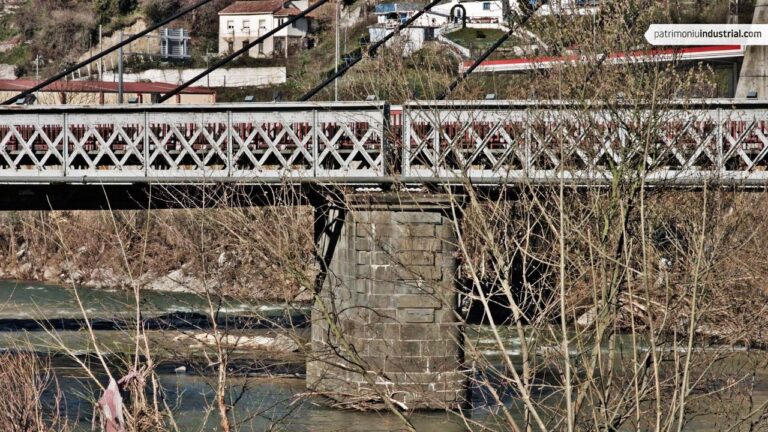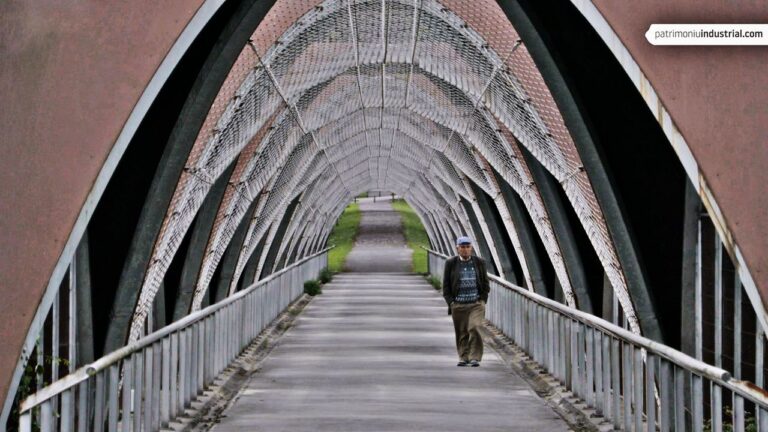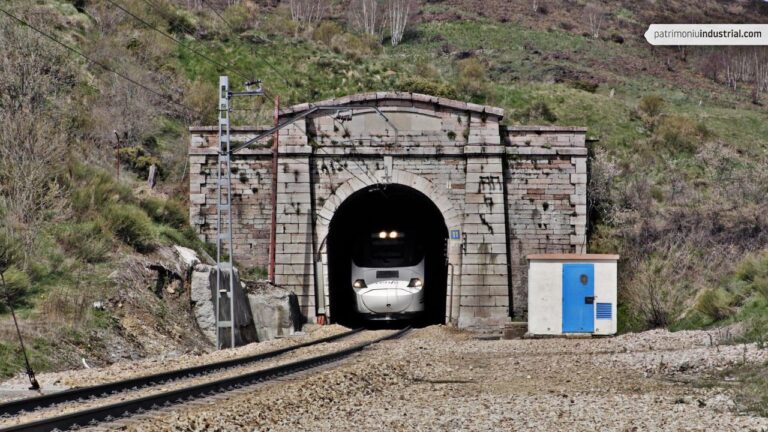From the middle of the nineteenth century onwards industrialization in the Principality of Asturias produced an important railway system which has left a unique and valuable legacy in terms of architecture and infrastructures.
The early industrialization process encouraged the creation of a railway network at the service of the coal and steel industries of Asturias. One of the earliest recorded uses of railways in Spain took place in Arnao in 1834. The use of railways and tubs in coal mines was well established by mid-century, when the layout of the valleys and slopes facilitated the construction of lengthy downhill transport networks. Mining railways of a considerable size – such as the Sama-Sotón line – appeared after 1860, acting as tributaries to public use railway lines.
Public use railway happened at a later stage, however, yet it still relied on industrialization. The Langreo Railway started operating in 1852 to link the Nalón mining valley and the Gijón port. Its peculiar width and complex infrastructure system make it unique in Spanish railway history.
Difficulties deriving from the orography and the period’s economic circumstances affected the construction of a means of communication with central Spain, which as far as railways are concerned began with the Pola de Lena-Gijón line (1874) and ended with the massive Pajares ramp ten years later. This network was completed shortly afterwards with several branches serving locations in the periphery such as Trubia and Avilés. It was the property of Compañía del Norte (Northern Company), Renfe’s predecessor, whose monopoly had important consequences for the local industry.
Finally, it is worth mentioning that at the turn of the century a metre-gauge railway network was built as service rural areas (Ferrocarril del Carreño) and as an alternative to Compañía del Norte’s monopoly on coal transport (Basque-Asturian Railway). Once it reached Llanes, Económicos de Asturias (Affordable Railways of Asturias) became a part of a much larger metre-gauge network that covered much of the Cantabrian coastline and reached the French border. The final landmark of this system was the late construction – due to historical circumstances – of the Ferrol-Gijón line, designed as a strategic railway connecting the region to the military base and arsenal in Galicia and finished in 1972.
BAS ORDÓÑEZ, Guillermo: El ferrocarril de Pajares. Un repaso a su historia y patrimonio. Vindonnus número 2 (2018), páginas 24-33 [https://asociacionvindonnus.com/no2-2018-2-bas-ordonez/]
GÓMEZ MARTÍNEZ, José Antonio: El ferrocarril Ferrol-Gijón. Trea, Gijón, 1999
LÓPEZ GARCÍA, Mercedes (dir.): La Vía Estrecha en Asturias. Ingeniería y construcción (1844-1972). Gran Enciclopedia Asturiana, Gijón, 1995
VV. AA.: Asturias y el ferrocarril. Museo del Ferrocarril de Asturias, Gijón, 1999.
FLORES SUÁREZ, José María: La Compañía del Ferrocarril de Langreo en Asturias: estaciones e infraestructuras (1846-1972). Trea, Gijón, 2004







Recent Comments